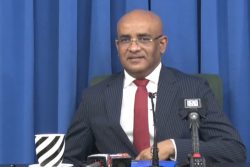WASHINGTON, (Reuters) – A U.S. government investigation has found that Myanmar’s military waged a “well-planned and coordinated” campaign of mass killings, gang rapes and other atrocities against the Southeast Asian nation’s Rohingya Muslim minority.
The U.S. State Department report, reviewed by Reuters ahead of its expected public release on Monday, could be used to justify further U.S. sanctions or other punitive measures against Myanmar authorities, said U.S. officials.
But it stopped short of describing the crackdown as genocide or crimes against humanity, an issue that other U.S. officials said was the subject of fierce internal debate that delayed the report’s rollout for nearly a month.
The findings resulted from more than a thousand interviews of Rohingya men and women in refugee camps in neighboring Bangladesh, where almost 700,000 Rohingya have fled after a military campaign last year in Myanmar’s Rakhine State.
“The survey reveals that the recent violence in northern Rakhine State was extreme, large-scale, widespread, and seemingly geared toward both terrorizing the population and driving out the Rohingya residents,” according to the 20-page report. “The scope and scale of the military’s operations indicate they were well-planned and coordinated.”
Survivors described in harrowing detail what they had witnessed, including soldiers killing infants and small children, the shooting of unarmed men, and victims buried alive or thrown into pits of mass graves. They described widespread sexual assault by Myanmar’s military of Rohingya women, often carried out in public.
One witness described four Rohingya girls who were abducted, tied up with ropes and raped for three days. They were left “half dead,” he said, according to the report.
Human rights groups and Rohingya activists have put the death toll in the thousands from the crackdown, which was sparked by attacks by Rohingya insurgents on security forces in Rakhine State in August 2017.
U.N. REPORT FOUND ‘GENOCIDAL INTENT’
The results of the U.S. investigation were being released nearly a month after U.N. investigators issued their own report accusing Myanmar’s military of acting with “genocidal intent” and calling for the country’s commander-in-chief and five generals to be prosecuted under international law.
The military in Myanmar, also known as Burma, where Buddhism is the main religion, has denied accusations of ethnic cleansing and says its actions were part of a fight against terrorism.
U.S. Senior State Department officials said the objective of the investigation was not to determine genocide but to “document the facts” on the atrocities to guide U.S. policy aimed at holding the perpetrators accountable, but the report proposes no new steps.
One of the officials, speaking on condition of anonymity, said it would be up to U.S. Secretary of State Mike Pompeo whether to make such a “legal” designation in the future and did not rule out the possibility.
A declaration of genocide by the U.S. government, which has only gone as far as labeling the crackdown “ethnic cleansing,” could have legal implications of committing Washington to stronger punitive measures against Myanmar.
The International Criminal Court last week said it had begun an examination of whether the alleged forced deportations of Rohingya could constitute war crimes or crimes against humanity.
Asked whether the new U.S. findings could be used to bolster such international prosecution, the State Department official said no decision had been made on seeking “judicial accountability” over the Rohingya crisis.
Sarah Margon, director of the Washington office of Human Right Watch, said: “What’s missing now is a clear indication of whether the U.S. government intends to pursue meaningful accountability and help ensure justice for so many victims.”
“The stories from some refugees show a pattern of planning and pre-meditation” by the military and other attackers, the report said, citing confiscation in advance of knives and other tools that could be used as weapons.
About 80 percent of refugees surveyed said they witnessed a killing, most often by military or police, according to the report.
“Reports of mutilation included the cutting and spreading of entrails, severed limbs or hands/feet, pulling out nails or burning beards and genitals to force a confession, or being burned alive,” the report said.
In a few cases, witnesses said Rohingya were either killed in pits bulldozed by the military or buried alive.
The State Department’s investigation was modeled on a U.S. forensic examination of mass atrocities in Sudan’s Darfur region in 2004, which led to a U.S. declaration of genocide that culminated in sanctions against the Sudanese government.
The Trump administration, which has been criticized by human rights groups and some U.S. lawmakers for a cautious response to Myanmar, could now face added pressure to take a tougher stand.
The United States on Monday announced it was almost doubling its aid for displaced Rohingya Muslims in Bangladesh and Myanmar, with an extra $185 million.
Any stiffer measures against Myanmar authorities could be tempered though by U.S. concerns about complicating relations between civilian leader Aung San Suu Kyi, a Nobel Peace Prize laureate, and the powerful military which might push Myanmar closer to China.
The U.S. government on Aug. 17 imposed sanctions on four military and police commanders and two army units but Myanmar’s military chief, Min Aung Hlaing, was spared. Further targeted sanctions have been under consideration, officials said earlier.
The Rohingya, who regard themselves as native to Rakhine state, are widely considered as interlopers by Myanmar’s Buddhist majority and are denied citizenship.









